The Best Portable Survival Water Filters: Ensuring you have Safe Drinkable Water
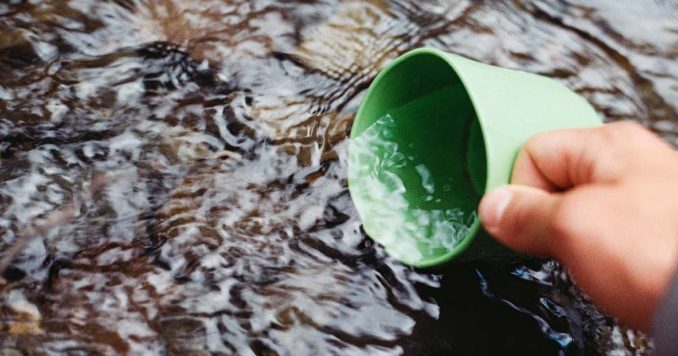
Even the best survival plan can quickly go bad if you find yourself without a clean, drinkable source of water. During a disaster, water can quickly become compromised so having the ability to filter and treat water that has been contaminated is essential to your survival.
During extreme survival situations, people have been documented to live for months without food. The same cannot be said about water. Without water, your body can start to feel the effects of dehydration in as little as one day.
In my opinion, a water filter is one of the most important pieces of gear you can carry. Without water, you’re pretty much screwed; if you do find water, without proper filtration, you still might be in some serious trouble. There are some pretty nasty diseases that you can pick up from drinking untreated water; some of them can actually kill you.
Why do you need a Water Filter?
During a disaster, local water sources can quickly become contaminated; even municipal water systems often issue boil water notices during natural disasters, so you need to have a way to make your water sources drinkable if you are evacuating during a disaster or find yourself needing to obtain water from a natural water source than a filter becomes even more important.
Natural water sources can contain microorganisms like bacteria and protozoa, including giardia, cryptosporidium, E-coli, salmonella, cholera, shigella, and coliform. In general, viruses are only a concern in international water sources and shouldn’t be a problem in the United States, Canada, and the UK.
Water Treatment Tips
While water filters are an essential piece of survival gear, there are some other precautions that you need to take to ensure your treatment process is as effective as it can be.
- Separate dirty and clean water containers: Never filter water into a container that you used to collect natural water.
- Read the User Manual: Using your filter in the wrong way can cause cross-contamination, so make sure you read your manual and practice using the filter before just storing it way in your bag.
- Find the Cleanest Source of Water Available: First, unless you are in a life or death situation, you want to seek out a clean water source. If you find yourself in a situation where you need to use your filter, find the cleanest section of water available, as sediment can clog even the best of filters.
- Practice good hygiene: When treating water, make sure you wash your hands and use hand sanitizer if available — this will help with cross-contamination.
- Camp away from your water source: If you have to camp or shelter near your water source, try to stay at least 250-500 feet away and never use the bathroom or wash dishes near your water source.
I also like to carry coffee filters in my packs; If you filter the water through a coffee filter first, it will make the filters on your system last longer. You can also use a t-shirt or a sock and secure it with a twist-tie, rubber band, or fishing line to help eliminate sediment from hitting your
inlet.
What are the pros and cons of buying a hiking water filtration system?

While there are a number of different methods for purifying water, one quickest and easiest ways to make sure your water is safe, especially during a but out situation, is to choose a good quality portable hiking filter.
Why you should have a good portable water filter with your survival supplies:
- Hiking filters are a great way to make sure that your water source is free of bacteria and viruses. Depending on the source of water, in a wilderness environment, there can be a lot of microorganisms in untreated water. Most modern hiking filters are designed specifically to filter out these germs, and some can even get rid of harmful chemicals and heavy metals.
- They are lightweight and designed to be easily carried in a backpack, making them a great option for bug out bags.
- Much Faster than boiling water: If you’re on the move, using a water filter is a hell of a lot quicker than having to stop, build a fire, and boil water.
- It can make the water taste better: A lot of people say that drinking filtered water just tastes better than drinking boiled water.
- Boiling will do nothing to get rid of herbicides and pesticides; the right water filter can filter out these hazardous chemicals.
Some things that you should be aware of:
- If you are planning for long-term survival, keep in mind that even the best hiking filters on the market won’t last forever. A good canteen for boiling water will outlast most hiking filters.
- Boiling water is the safest way to get rid of contaminants (except for chemicals), it’s also pretty much idiot proof. Filters, if not hooked up properly can still allow contaminants into your water.
The Top Portable Water Filters for Preppers
Removing impurities from your drinking water can be deadly serious, so picking the right filter is not something that should be taken lightly. Here are the best hiking filters that you can find.
Katadyn Pocket Water Microfilter
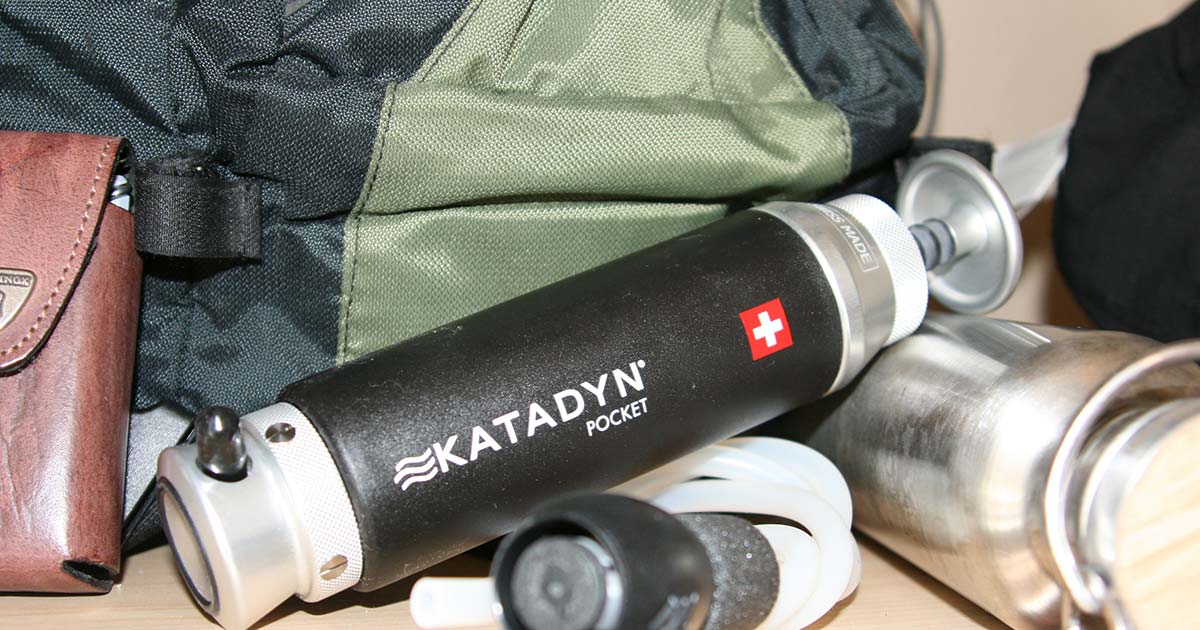
I’ve been recommending this filter for over eight years now. I personally own one, have one in my bug out bag, and can attest to its ability to hold up in some pretty harsh environments. This is the highest end filter on our list; it doesn’t come cheap, but you can count on it when things go bad!
The silver-impregnated ceramic filter is rated to last 13,000 gallons and gives you an output of about 1 liter every minute. It’s backed by a 20-year warranty, so when I say this thing is built like a tank, you know the company is pretty damn sure of its quality.
It’s effective against microorganisms and is designed for solo travel and small groups up to 3 people.
Quick Stats on the Katadyn Pockey Filter
- Filter Technology: Pump filter, ceramic depth filtration (0.2 microns = 0.0002mm pores)
- What Does it Filter? It’s effective against microorganisms; it gets rid of bacteria, protozoa, cysts, algae, spores, and
- How many Gallons can it Filter? It is rated to filters 13,000 gallons (49,210 liters).
- Material: Aluminum, stainless steel, silicone, ceramic.
- Weight: 19 Ounces
The LifeStraw

And now for one of the cheapest filters on our list, the LifeStraw. I’m going, to be honest here; I don’t know that I would rely on this filter to provide clean and drinkable water for more than a couple of days; they say it’s rated to give a single person five years of drinkable water, but it’s nowhere near as well-built as the Katadyn.
That being said, LifeStraws are relatively cheap, usually retailing for around $20; so I do like the fact that I can buy a couple of them and cheaply stash them away in my glove box, go bags, at work, or anywhere else I might be when disaster strikes.
Quick Stats on the LifeStraw
- Filter Technology: Hollow fiber microfiltration membrane (0.2 microns)
- What Does it Filter? It removes 99.999% of bacteria, parasites, and microplastics.
- How many Gallons can it Filter? It is rated to filters1,000 gallons (4,000 liters).
- Material: BPA Free plastic materials
- Weight: Extremely lightweight; it weighs in at only 1.62 oz
The LifeStraw Steel
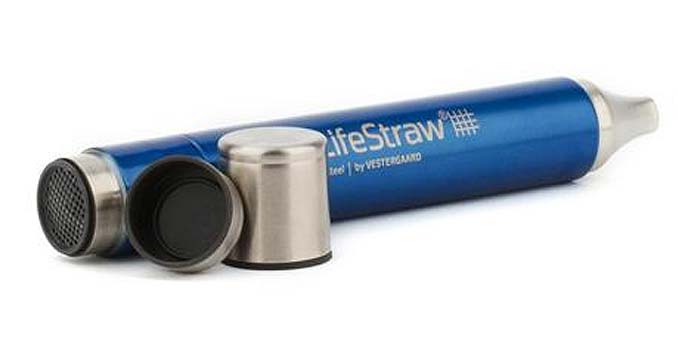
The price point on the LifeStraw Steel is a little higher than its plastic counterpart, but it solves most of the problems that I mentioned above and is still on the cheaper end of the spectrum. The steel version also features 2-stage filtration with an activated carbon capsule that will help improve the taste and smell of the treated water.
Quick Stats on the LifeStraw Steel
- Filter Technology: 2-stage filtration; Hollow fiber membrane and replaceable carbon filters.
- What Does it Filter? It removes 99.999% of bacteria, parasites, and microplastics.
- How many Gallons can it Filter? It is rated to filter 1,000 gallons (4,000 liters) and 26.5 Gallons (26.5 100 liters) with the extra carbon filter.
- Material: Steel
- Weight: Extremely lightweight; it weighs in at only 2 Ounces
Find the LifeStraw Steel on Amazon
Sawyer Products Mini Water Filtration System
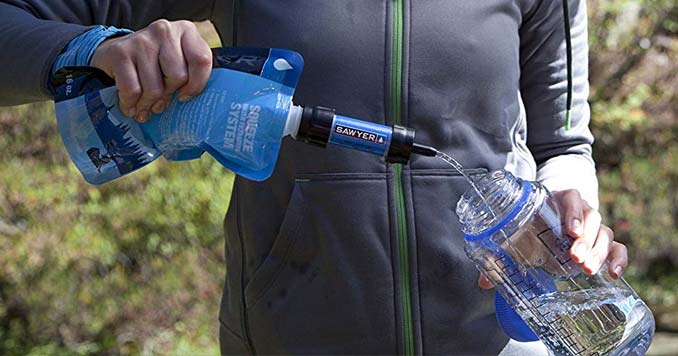
Another budget-friendly filter that we like is made by Sawyer Products. Their Mini Filter provides 0.1-micron filtration making it virtually impossible for harmful bacteria (like salmonella or leptospirosis), protozoa, or cysts like E. coli, Giardia, Vibrio cholerae, and Salmonella typhi to pass into your clean water supply.
The Sawyer can be used to drink directly from the source of can be used with water bottles, hydration pack, or to the included 16oz mylar drinking pouch.
Quick Stats on Sawyer Products Filter
- Filter Technology: Hollow Fiber
- What Does it Filter? It’s effective against microorganisms; it gets rid of bacteria, protozoa, or cysts like E. coli, Giardia, Vibrio cholerae, and Salmonella
- How many Gallons can it Filter? Rated to filter an astonishing 100,000 gallons of water.
- Material: Plastic
- Weight: Only 2 Ounces
Find the Sawyer Products Mini on Amazon
Water Filters make Safe Water, not Perfect Water.
Do these filters guarantee that the water is 100% safe to drink? No, they lower the risk factors to a point where they are so low that a moderately healthy or mildly sick person can feel safe drinking the treated water.
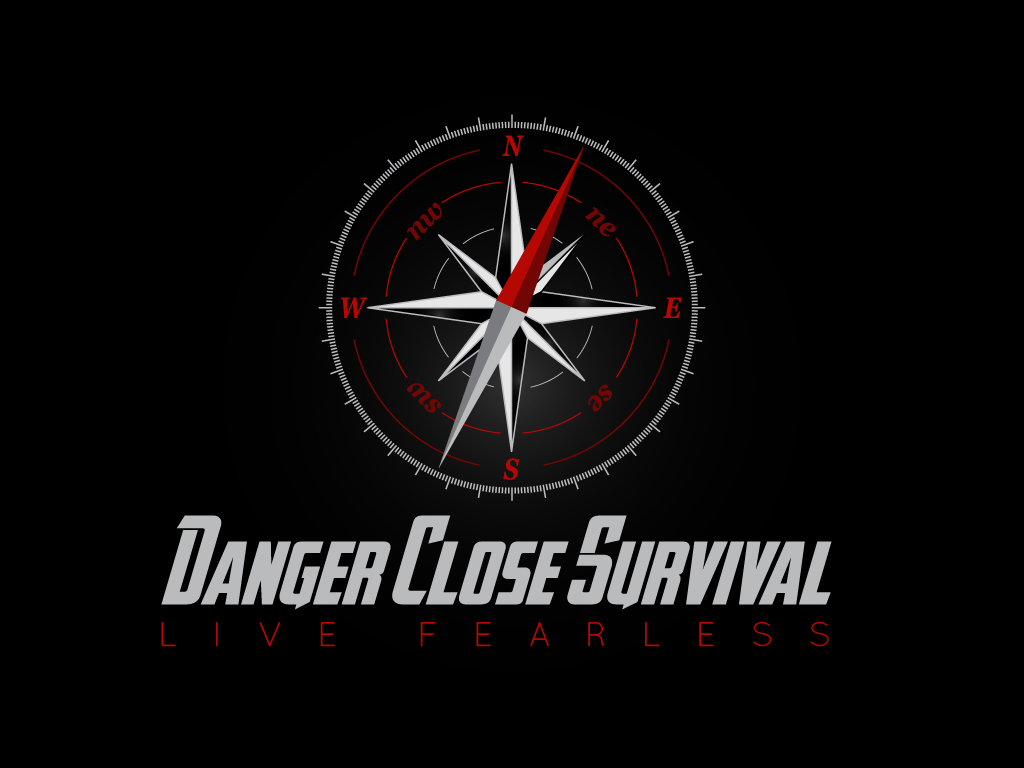
 Next Post
Next Post